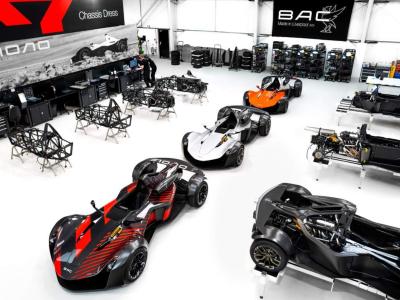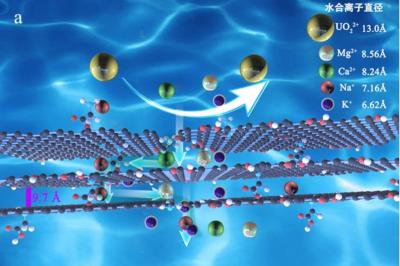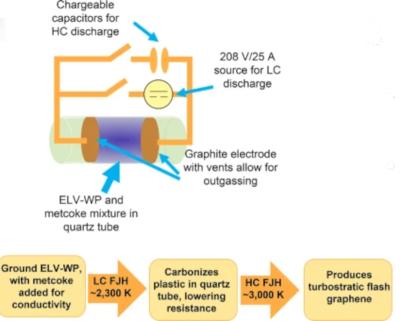The Graphene-info newsletter ( May 31, 2022 )
posted on
Jun 01, 2022 10:38AM

Hydrothermal Graphite Deposit Ammenable for Commercial Graphene Applications

Cannot read this? View it online here
Briggs Automotive Company (BAC) has started production of the new Mono R – a higher-performance, lighter and more advanced new generation of the Mono supercar. The new Mono R supercar will be distributed around the world and will be on display at a number of new global dealer partners situated in the USA, Singapore, and Germany.

The Mono R includes 44 graphene-enhanced carbon composite body panels that have been restyled to give Mono R a more aggressive stance. The BAC website states: “Mono R is the first production car in the world incorporating revolutionary material graphene in its panels, contributing to a kerbweight of just 555kg. The pinnacle of cutting-edge innovation, R sets the bar for what’s possible from technology in the supercar industry”.
Researchers at the Institute of Modern Physics (IMP) of the Chinese Academy of Sciences (CAS), in collaboration with teams from China's Lanzhou University and Hebei University, have developed a graphene oxide-based method of pre-enriching uranium in seawater by membrane filtration.

In their study, the scientists fabricated a new type of glycine cross-linked composite graphene oxide (GO-Gly) membrane with good ion sieving properties, which can meet the demands of uranium pre-enrichment in seawater.
Researchers from Rice University and Ford Motor Company are working together on turning plastic parts from end-of-life vehicles into graphene, via the university’s flash Joule heating process.

The Rice lab of chemist James Tour introduced flash Joule heating in 2020 to convert coal, waste food, plastic and other materials into graphene.
Zentek has announced that it will be opening its industrial scale ZenGUARD™ antimicrobial production facility in Guelph, Ontario on June 17th, 2022. This facility is claimed by Zentek to be one of the largest nanomaterials-based manufacturing facilities in the world.
“The opening of this facility is an important milestone for our company as it represents our successful journey from the lab, through regulatory and now to industrial commercialization. I would like to personally thank all our employees and vendor partners who put in considerable time and effort to make this happen,” said Greg Fenton, CEO of Zentek. “We’re now ready to begin meeting the growing interest and demand for our ZenGUARD™ coating.”
A team of researchers from Yale University, The University of Texas at Dallas and the National Institute for Materials Science in Tsukuba, Japan, has built a graphene-based intelligent sensor that can simultaneously detect the intensity, polarization and wavelength of light, tapping into the quantum properties of electrons. The team estimates this breakthrough could help advance the fields of astronomy, health care, and remote sensing.
The researchers used twisted double bilayer graphene (TDBG)—that is, two atomic layers of natural stacked carbon atoms given a slight rotational twist—to build their sensing device. The twist reportedly reduces the crystal symmetry, and materials with atomic structures that are less symmetrical—in many cases—promise some intriguing physical properties that aren't found in those with greater symmetry.
Watercycle Technologies, a spin-out company from The University of Manchester, has secured initial funding for its technology that uses graphene-based membranes and systems to extract lithium and other minerals from brines and water solutions.
Led by Sebastian Leaper, a former PhD student from the Department of Materials at Manchester, Watercycle Technologies has taken Tier 2 membership of the Graphene Engineering Innovation Centre (GEIC), with lab space and access to advanced 2D materials facilities and expertise in prototyping.
India-based start-up, Nordische Technologies, claims to have launched an Aluminium-Graphene pouch cell battery for consumer electronics, gadgets and future EV technology in association with the Central Institute of Petrochemicals Engineering and Technology (CIPET), Bengaluru.
The company said in a statement that the Aluminum-Graphene pouch cell battery is the world's fastest charging, non-toxic, non-flammable, and non-lithium non-cobalt battery with a long cycle life.
Levidian Nanosystems recently signed its first customer deal to supply its Levidian LOOP10 system at a site in Abu Dhabi, owned by IDC.
The agreement will see more than 500 LOOP decarbonization systems rolled out across the UAE, together with Zero Carbon Ventures, which will focus on decarbonizing waste gas on landfill and gas flaring sites, partnering with major oil and gas companies, and government agencies across the Emirates.
Researchers at the Ningbo Institute of Materials Technology and Engineering (NIMTE) of the Chinese Academy of Sciences (CAS), led by Prof. CHEN Tao, have designed strain-perception-strengthening (SPS) enabled biomimetic soft skin, which realizes the dynamic transformation from tactile to pain perception.
The synthetic skin is said to be elastic, conductive, and adaptive. It is composed of elastomeric thin-film and assembled graphene nanosheets with an interlocked structural interface.
A social housing development in Wales is reportedly being heated by graphene-enhanced wallpaper by NexGen Heating, as part of a trial exploring affordable alternatives to radiators and heat pumps to keep residents warm.
The graphene heating system, which aims to look and feel just like traditional wallpaper, can be plugged into a domestic socket, and is packaged with solar panels and a smart battery, meaning it cuts emissions while vastly lowering fuel costs.